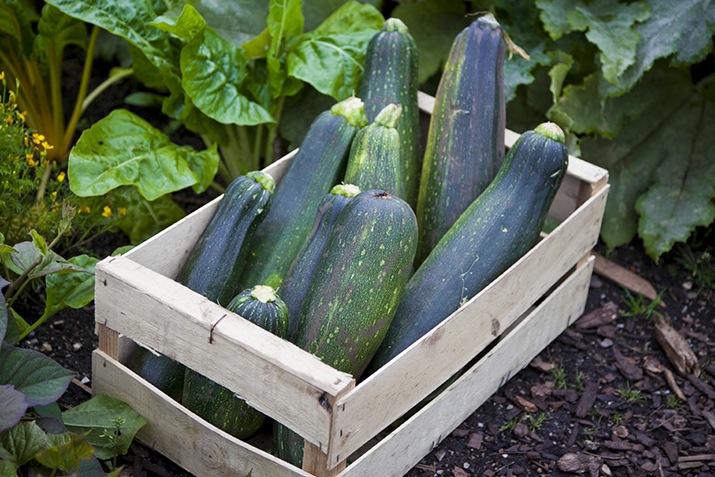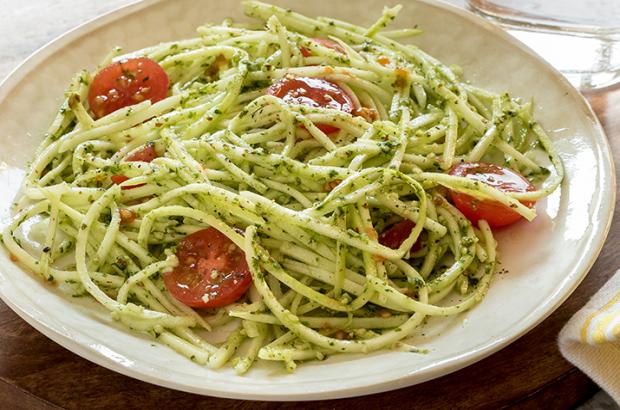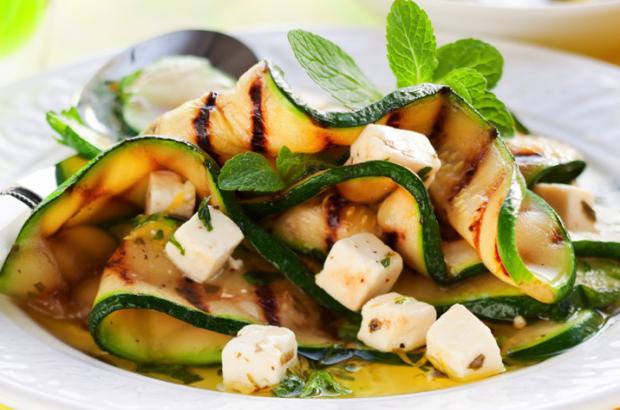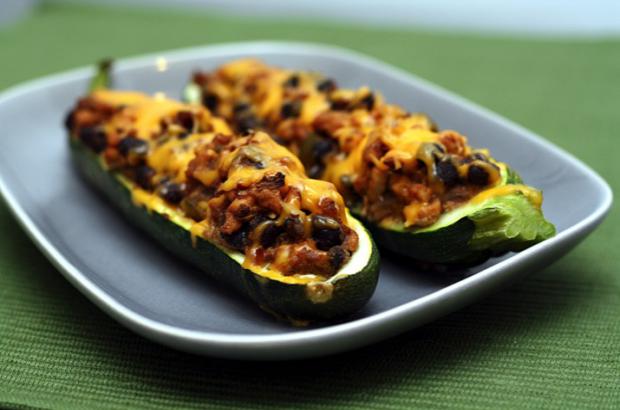Article
Zucchini

Come summer, there's always zucchini on the menu! How lucky for us that something so delicious is also a prolific grower. National "Sneak Some Zucchini into your Neighbor's Porch Day" is August 8, about the time when zucchini crops across the country abound.
Enjoyed as a vegetable but actually an immature fruit, zucchini is a relative of the cucumber and the melon. Formerly called Italian squash—the word "zucchini" comes from the Italian word for small squash, "zucchino"— it was likely introduced to the United States by Italian immigrants in California in the early 1920s.
Zucchini takes just about 50 days from planting to eating. It's not cold hardy, but it'll grow easily in many parts of the world, including throughout the United States. And it comes in all sizes, from just a few inches to the largest zucchini to date, grown in Niagara Falls and measuring 8 feet 3 inches.
The zucchini is an excellent source of manganese and vitamin C and a very good source of magnesium, vitamin A, dietary fiber, potassium, folate, copper and phosphorus. It's a good source of omega-3 fatty acids, vitamins B1, B2 and B6, calcium, zinc, niacin and protein.
The edible flowers are a good source of beta-carotene and vitamin C.
The best known of the summer squash, there are at least 50 varieties of zucchini, from smooth, long, thin specimens (Fascienne and Cocozelle) to squat and round ones (Black Ball and Lucky 8). Skin colors range from yellow (Golden Girl and Grenade) to dark green (Nano Verde di Milano) and some with striped or speckled skin (Green Tiger and Lucky 8). There's even a rectangular variety (great for grilling) called Green Griller and a grey-skinned variety, called Greybeard.
You may come across recipes calling for courgette, the French term for zucchini.
Zucchini has a light, delicate flavor, and the entire fruit is edible—the skin, flesh, seeds and flower.
Roasted Ratatouille is a beautiful combination of zucchini and other vegetables, all marinated in seasoned red wine and roasted to enhance their flavors. Roasting zucchini—along with other favorite vegetables—is also a tasty way to top pasta, pizza, or a sandwich. Mediterranean Roasted Vegetables offers inspiration for a seasonal medley.
Zucchini makes great grilling fare, too. Grilled Summer Vegetables with Fresh Mozzarella combines zucchini with red bell peppers, eggplant and fresh basil.
Feature zucchini by stuffing it with an array of grains, beans or vegetables. These Southwestern Stuffed Zucchini Boats are filled with spicy black beans and topped with cheddar cheese. Or make Zucchini Pesto “Pasta”—also referred to as "zoodles"—for a delicious, gluten-free pasta alternative. Layer zucchini in your next pan of lasagna, and toss it in any stir-fry.
Still have zucchini to spare? Hearty Minestrone Soup is a delicious way to use up a bounty of summer vegetables of all kinds. Or grate your zucchini and fold it into bread and cake batters, fritters and pancakes, omelets and quiches. Summer Vegetable Quiche features zucchini, spinach, red bell pepper and creamy goat cheese.
Zucchini blossoms are a delicacy when battered and fried or baked (stuff with cheese and spritz with a little lemon). You might also add them to sauces and soups or use them, cooked, in tacos and quesadillas.
Zucchini is available throughout summer, and its peak season is May through August.
Small to medium-sized zucchini are generally more tender than older, larger vegetables (the vegetable develops more seeds and becomes tougher as it gets larger).
Look for bright, blemish-free skin, and avoid zucchini with soft spots. It should be firm and heavy for its size. If the rind is too hard it may be over-mature.
Take care not to puncture the skin, or the fruit will decay more quickly. Store zucchini unwashed in a perforated plastic or vegetable bag in the refrigerator for up to a week.













